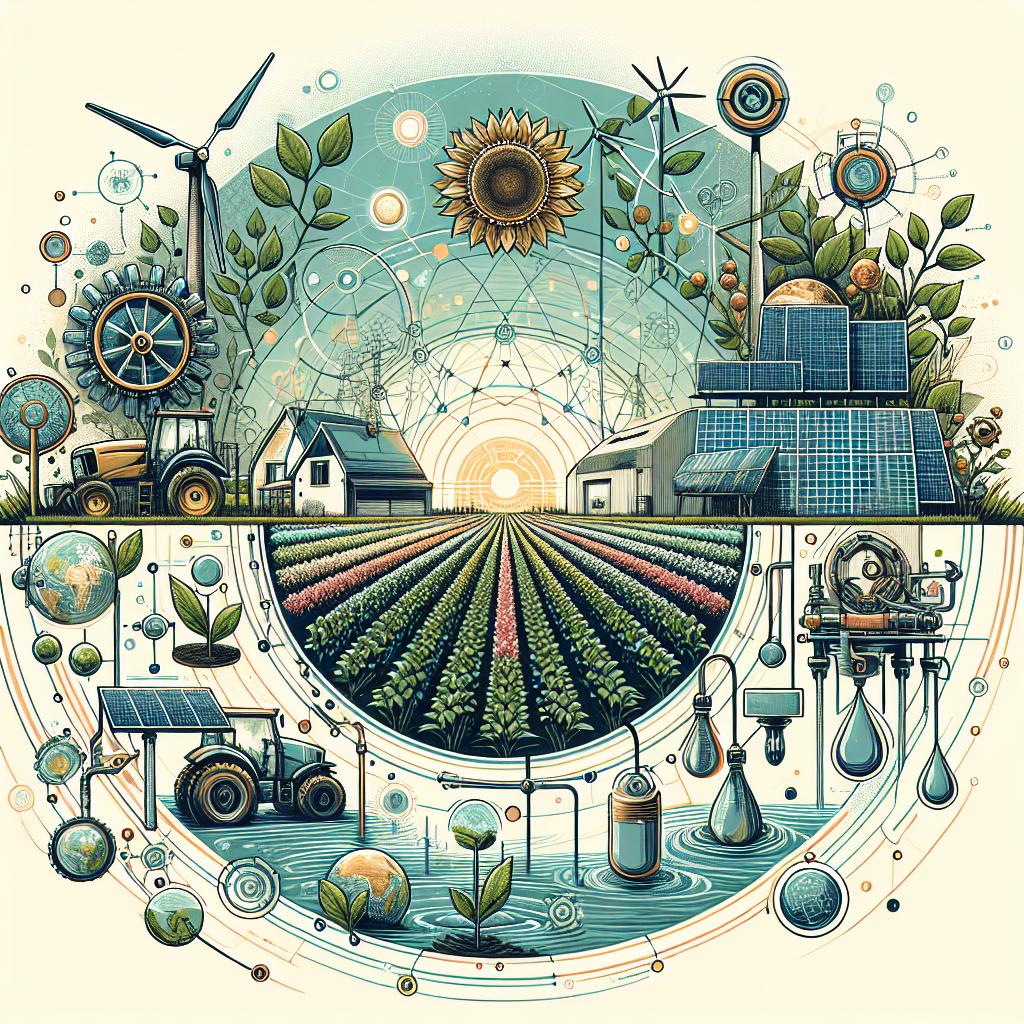This post may contain affiliate links which means I may receive a commission for purchases made through links. Learn more on my Private Policy page.
As the world grapples with the growing threat of climate change, nature’s canvas is shifting in unpredictable ways, leaving farmers, communities, and ecosystems to reckon with the consequences. But what if we could turn the tide of this challenge into an opportunity for resilience? Enter irrigation—a time-honored practice that, when innovatively adapted, holds remarkable potential as a proactive strategy in the face of climate disruptions. As we delve into the depths of this vital resource, we’ll explore not just the mechanics of irrigation, but also the vibrant tapestry of hope and ingenuity woven by those who dare to dream of sustainable futures. So, grab your watering can and let’s embark on a journey through the world of irrigation, where every drop counts and solutions are sprouting up all around us!
Harnessing the Power of Water to Combat Climate Change
As we confront the escalating challenges posed by climate change, the role of irrigation emerges as a crucial strategy for maintaining agricultural productivity and ecosystem balance. Irrigation techniques, such as drip and center-pivot systems, allow for targeted water distribution, minimizing waste while maximizing crop yield. This precision not only ensures resource efficiency but also reduces the environmental impact associated with over-extraction from natural water bodies. By harnessing technology, farmers can adapt to fluctuating weather patterns—mitigating drought impacts and ensuring a steady food supply. In regions prone to water scarcity, these innovations create a resilient agricultural framework that anticipates and reacts to changing conditions.
Moreover, effective irrigation practices have implications that go beyond immediate agricultural benefits. Implementing sustainable irrigation can contribute to the restoration of local ecosystems and the preservation of water quality. For example, using cover crops and mulching techniques alongside irrigation can enhance soil health and water retention, leading to decreased runoff and nutrient leaching. The integration of smart irrigation systems—that utilize sensors and real-time data—represents a promising future for climate resilience. Key advantages include:
- Increased Crop Resilience: Helps plants maintain health during adverse weather.
- Water Conservation: Reduces overall water usage by optimizing delivery.
- Soil Health Improvement: Promotes microbial activity essential for nutrient cycling.
irrigation stands as a potent ally in the fight against climate change, ensuring not just survival but also sustainability for future generations.

Innovative Irrigation Techniques for Resilient Agriculture
In the face of climate change, traditional irrigation methods may struggle to keep up with the increasing demands of agriculture. Innovative techniques are emerging as game changers, enabling farmers to optimize water use while enhancing crop resilience. Some of these techniques include:
- Drip Irrigation: A precise method that delivers water directly to the plant roots, minimizing waste and evaporation.
- Smart Sensors: Devices that monitor soil moisture levels and weather conditions to automate irrigation schedules.
- Rainwater Harvesting: Collecting and storing rainwater for agricultural uses, reducing dependence on mains water.
Farmers are also experimenting with integrated systems that combine multiple irrigation strategies to create a more resilient agricultural framework. For instance, the integration of permaculture principles promotes biodiversity while utilizing natural water cycles. An emerging practice is the use of subsurface irrigation, which keeps the soil moisture consistent and shields the crop from the harsh elements above. Farmers who adopt these innovative approaches are not only boosting their productivity but also contributing to the sustainability of their ecosystems.
| Technique | Benefits |
|---|---|
| Drip Irrigation | Reduces water waste, increases crop yield |
| Smart Sensors | Automates watering, saves labor costs |
| Rainwater Harvesting | Decreases reliance on groundwater, sustainable |

Empowering Communities: Building Knowledge and Resources
In the face of climate change, communities are discovering the vast potential of irrigation systems as a formidable adaptation strategy. By implementing sustainable irrigation practices, communities can enhance their resilience to fluctuating weather patterns, ensuring more reliable access to water for agricultural use. This proactive approach not only aids in food security but also promotes economic stability. To fully harness the benefits of irrigation, it’s essential to focus on knowledge sharing and resource accessibility among farmers and local stakeholders. Sharing best practices and successful case studies can inspire innovation and cooperation, leading to more effective irrigation solutions.
Moreover, building a robust network of support and resources is crucial for empowering communities. Local governments, NGOs, and agricultural organizations can collaborate to provide training programs and technical assistance. These initiatives could cover topics such as:
- Water conservation techniques
- Efficient irrigation technologies
- Soil management practices
- Crop selection aligned with climate patterns
By creating a community-centered approach to irrigation development, we can cultivate not only agricultural growth but also a sense of agency and community spirit that empowers individuals to take charge of their climate resilience. This holistic perspective paves the way for a sustainable future where communities thrive despite the challenges posed by climate change.

Sustainable Solutions: Best Practices for Future-Proofing our Farms
As climate change continues to amplify weather unpredictability, irrigation emerges as a vital adaptation strategy for farmers. Effective irrigation systems can optimize water usage, turning glacial streams or seasonal brooks into reliable resources. Implementing advanced technologies such as drip irrigation and soil moisture sensors not only maximizes efficiency but also minimizes waste. This practice supports crop resilience during drought spells and enhances yields, ensuring that farms remain productive in the face of climate uncertainties.
Moreover, diversifying water sources is crucial for sustainable farming. Options like rainwater harvesting and recycled wastewater can supplement traditional irrigation techniques. By incorporating these practices, farmers can create a more robust irrigation strategy, reducing dependency on single supply chains. Here’s a simple comparison table demonstrating traditional versus sustainable irrigation practices:
| Traditional Irrigation | Sustainable Irrigation |
|---|---|
| Higher water wastage | Optimized water usage |
| Dependent on rainfall | Integrated alternative sources |
| Uniform crop growth | Targeted watering |
In Summary
As we usher in an age where climate change is reshaping our landscapes and livelihoods, the potential of irrigation as a vital adaptation strategy shines brighter than ever. It’s more than just channeling water to thirsty crops; it’s about nurturing resilience, preserving communities, and supporting food security in the face of unpredictable weather patterns.
Imagine vast fields flourishing under the careful hands of farmers who are empowered by innovative irrigation practices, cultivating not just crops but also hope for a sustainable future. With thoughtful implementation and investment, irrigation can transform arid challenges into bountiful opportunities, allowing us to adapt and thrive amidst the changing climate.
So let’s embrace the promise of irrigation and work together to make it a cornerstone of our climate adaptation efforts. After all, the road ahead may be uncertain, but with every drop we save and every field we nourish, we’re sowing the seeds of resilience for generations to come. Here’s to a greener, more sustainable world—one irrigation system at a time!
This post may contain affiliate links which means I may receive a commission for purchases made through links. Learn more on my Private Policy page.

